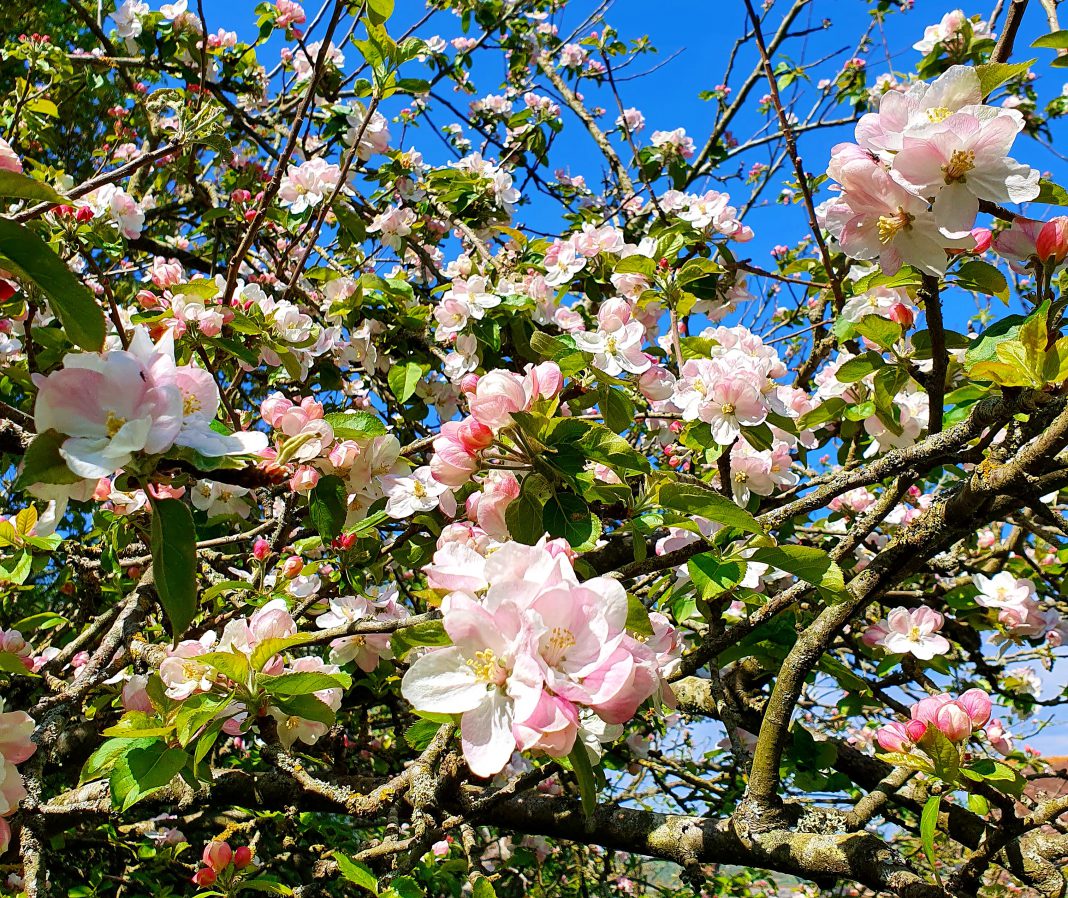Winchelsea’s Second Wednesday meetings (see more details below) can inspire a range of thoughts – particularly this month as May is named after Maia, the Ancient Greek Nymph – and her name means Mother or Growth – and, without us having to lift a finger, she’s already given joyous displays of wildflowers, spring flowers and blossom.
For the Romans, Flora was the Goddess of flowers and fruit. And from the Pagan calendar, the first few days of May bring us the bold, loud, fantastical Jack in the Green. We still have one of the UK’s largest celebrations, enjoyed last weekend, on our doorstep in Hastings. In the rest of the Country, May Day events include the crowning of May Queens, Morris Dancers and dancing around the Maypole.
Of late (writes Natasha Robinson) I’ve been unable to watch the news; the tragedy unfolding in Eastern Europe has become unbearable. Instead I’ve immersed myself in my original love, History of Art and binge watched the major new BBC series “Art That Made Us”.
In History of Art you learn that perceived History is written by the victors, but the true reflection of a society and the times in which they lived, is in the Art of the day. Literature, Music, Poetry, Architecture, Painting and Sculpture are the mirror of their era.
April’s statues
Art and more specifically Statues, was the subject our April Speaker, Andrew Ashton, came to talk to us about at Second Wednesday. From their allegorical and commemorative origins in the Acient Civilisations, think Muses or Emperors; through to their political statements of power, privilege and flattery, as typified during the Victorian era; and back to representations of human endeavour and emotion in modern times, such as the Statue of Liberty or the Angel of The North.
One of my personal favourites is the Fourth Plinth in London’s Trafalgar Square. Ever changing, it is alive with the 21st century. In 2009 Anthony Gormley’s exibit “One and Other “, put a different member of the public on the plinth for an hour, over the course of 100 days. They were free to do what they wanted for that hour. I applied for one of the 2,400 spots, but didn’t get picked. I was in good company though; Gormley applied too and wasn’t selected either.
I suddenly realised that I couldn’t think of a focal statue in Rye. There must be many reasons; history, space, geography, politics. Perhaps when a place is so imbued with so much History, in such a confined space and every cobble and building could tell a thousand stories, maybe there is just a quiet pride and self confidence that doesn’t need advertising.
Dance reflects the spirit
Dance is another of the Arts that reflects the spirit of a People. The need to gather, share and express your feelings communally, through synchronised movement, remains one of the ways in which a culture creates and maintains its social cohesion and identity. Not only an expression of shared History, the complexity and challenges of these dances, promotes mental and physical wellbeing.
Who better therefore, than Paul Youlten and Maddy Coelho to talk to us about the History and evolutionary pathway of Scottish Dancing. Paul is part of the Management Committee of the Royal Society of Scottish Country Dance, in Edinburgh. Maddy teaches Scottish Country Dancing in the New Hall in Winchelsea, on Thursdays.
So yet again, the Winchelsea Second Wednesday Society will take you to different places, expand your knowledge and make you look at the world through different eyes. See you on Wednesday 11th May.
Image Credits: Natasha Robinson .



